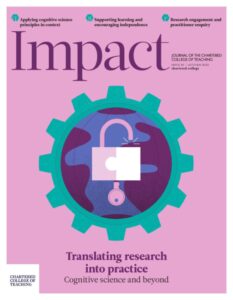Dual coding theory in the Classroom: An exploration of teacher’s perspectives across two English primary schools
Written by: William Payne

7 min read
William Payne, Master of Education Student, University of Derby, UK
Paivio (1971) identifies dual coding theory (DCT) as the use of visual stimuli alongside language-based input, utilising the brain’s cognitive capabilities to support memory and information processing. However, Clark and Paivio (1991) apply the theory specifically to the context of education and identify its applications to the classroom, supporting children in storing, retrieving and understanding a concept. More recently, Weinstein et al. (2018) have outlined the positive impact that strategies based on DCT can have when used by teachers to support memory and learning. Caviglioli (2019) provides further insight into this and advocates its application through the use of pictures, videos, graphic organisers, drawings and diagrams. This research explored DCT in the context of primary education, providing an insight into teachers’ perceptions of the approach.
Research approach
This phenomenological study is situ
Join us or sign in now to view the rest of this page
You're viewing this site as a guest, which only allows you to view a limited amount of content.
To view this page and get access to all our resources, join the Chartered College of Teaching (it's free for trainee teachers and half price for NQTs) or log in if you're already a member.
- Caviglioli O (2019) Dual Coding with Teachers. Woodbridge: John Catt Educational.
- Clark JM and Paivio A (1991) Dual coding theory and education. Educational Psychology Review 3(3): 149–210.
- Cuevas J and Dawson BL (2017) A test of two alternative cognitive processing models: Learning styles and dual coding. Theory and Research in Education 16(1): 40–64.
- Department for Education (DfE) (2018) Areas of research interest. Available at: https://assets.publishing.service.gov.uk/government/uploads/system/uploads/attachment_data/file/706991/DfE_Areas_of_research_interest.pdf#page6 (accessed on 28 March 2022).
- Paivio A (1971) Imagery and Verbal Processes. New York: Psychology Press.
- Weinstein Y, Madan C and Sumeracki M (2018) Teaching the science of learning. Cognitive Research: Principles and Implications 3(2): 1–17.











Well done, Will!